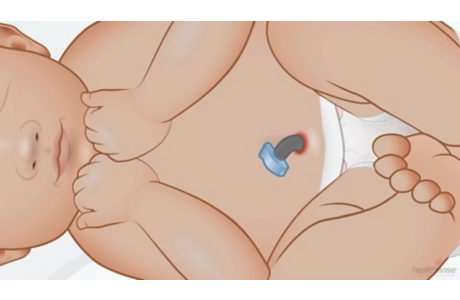Nipple Shields for Breastfeeding Problems
Topic Overview
What are nipple shields?
Nipple shields are devices to help with certain breastfeeding problems. A nipple shield looks like a little hat with a brim. The crown of the hat fits over the nipple, and the brim lies over the areola. Most nipple shields are made of a soft, thin, flexible plastic.
Why might nipple shields be used?
Nipple shields may be helpful for babies who have trouble sucking, such as:
- Premature infants, who may not be strong enough to breastfeed well.
- Full-term babies with latch-on problems.
Premature babies may not have strong suction and may not be able to latch on as well as full-term babies. Suction is important because it helps the baby get enough of the nipple in his or her mouth. Nipple shields can help premature babies get a better latch and get enough milk.
Nipple shields are meant for short-term use. For example, they might be used for a full-term baby having trouble latching on. After a few weeks, the baby will probably be able to nurse without a shield.
Also, nipple shields may sometimes be used when a mother has flat or inverted nipples.
If you are having a hard time breastfeeding, ask a doctor, nurse, lactation consultant, or other expert to help. You can try nipple shields if other methods or changes don’t work.
What should you do if you think you need to use nipple shields?
Nipple shields look simple, but there are some tricks to using them correctly. So be sure you get guidance from a lactation consultant or other breastfeeding expert. Your hospital, doctor, or midwife can help you find an expert in your area.
A lactation consultant can:
- Fit you with a shield that’s the right size and shape.
- Help you make sure that your baby is latching on and feeding properly.
- Advise you on how long to use nipple shields.
- Offer tips on how to wean your baby from the shields when the time comes.
How will you know if you are using a nipple shield correctly?
It’s important to use a nipple shield correctly. If it isn’t used the right way, your nipples could be damaged or your baby may not get enough milk.
These signs mean you are using the shield correctly:
- You feel your milk let down.
- You can see milk in the shield and hear your baby swallowing.
- Your baby is making a good latch.
- It doesn’t hurt or pinch when your baby sucks.
- The shield isn’t puckered or dented when your baby is latched.
- Your baby is gaining weight as expected and has the expected number of wet and dirty diapers.
Current as of: May 29, 2019
Author: Healthwise Staff
Medical Review:Sarah Marshall MD – Family Medicine & Kathleen Romito MD – Family Medicine & Adam Husney MD – Family Medicine & Kirtly Jones MD – Obstetrics and Gynecology
This information does not replace the advice of a doctor. Healthwise, Incorporated, disclaims any warranty or liability for your use of this information. Your use of this information means that you agree to the Terms of Use. Learn how we develop our content.







